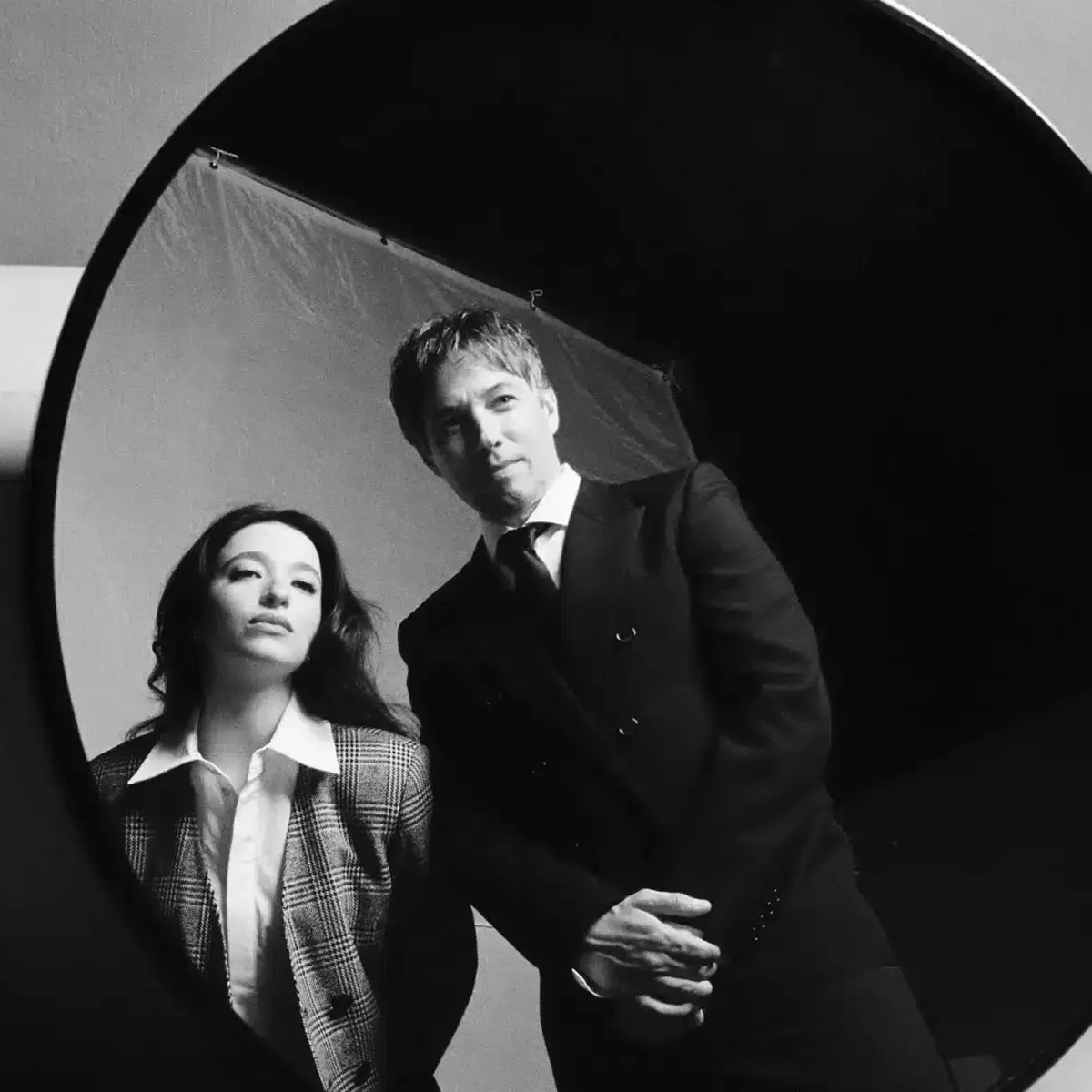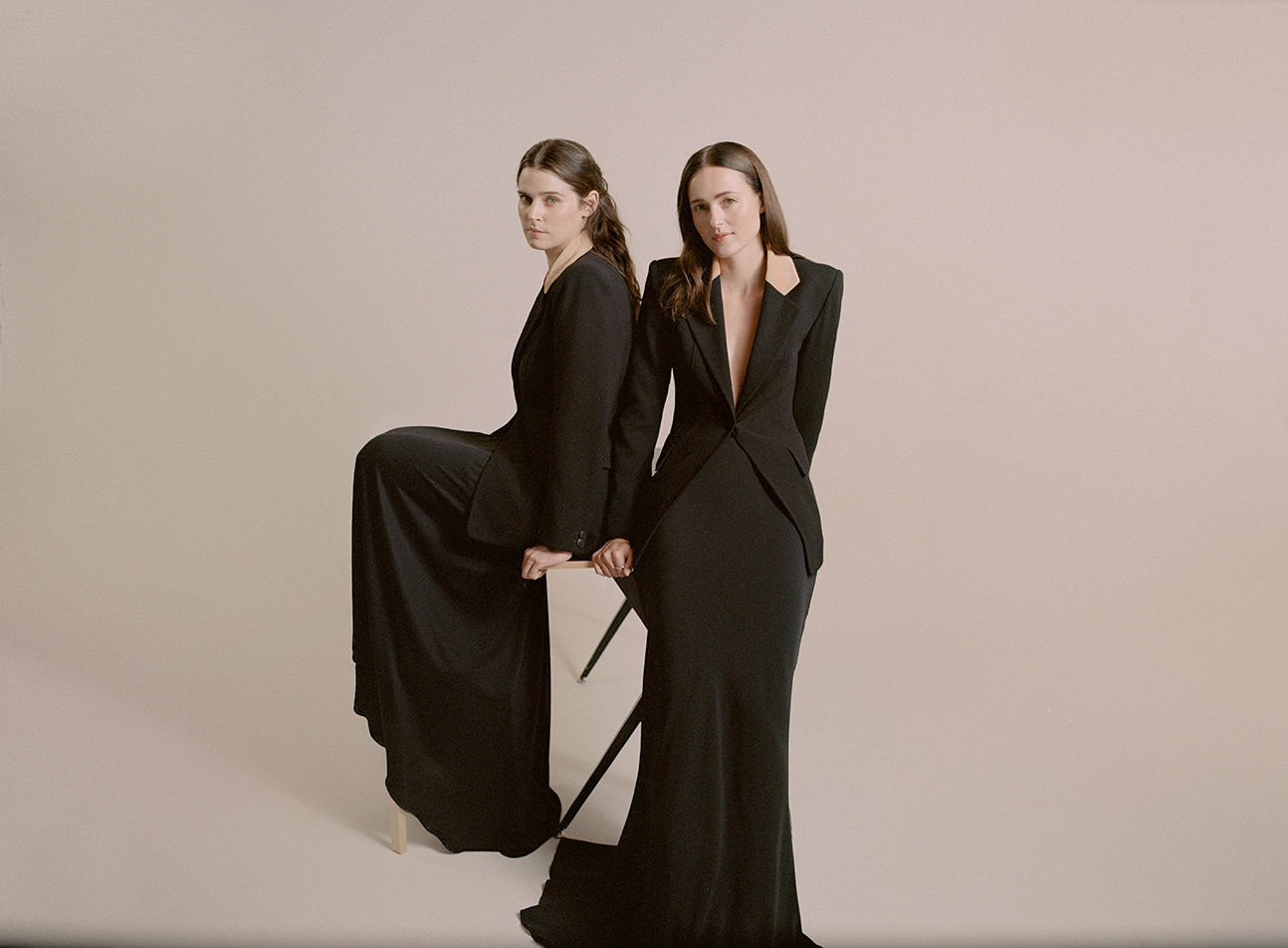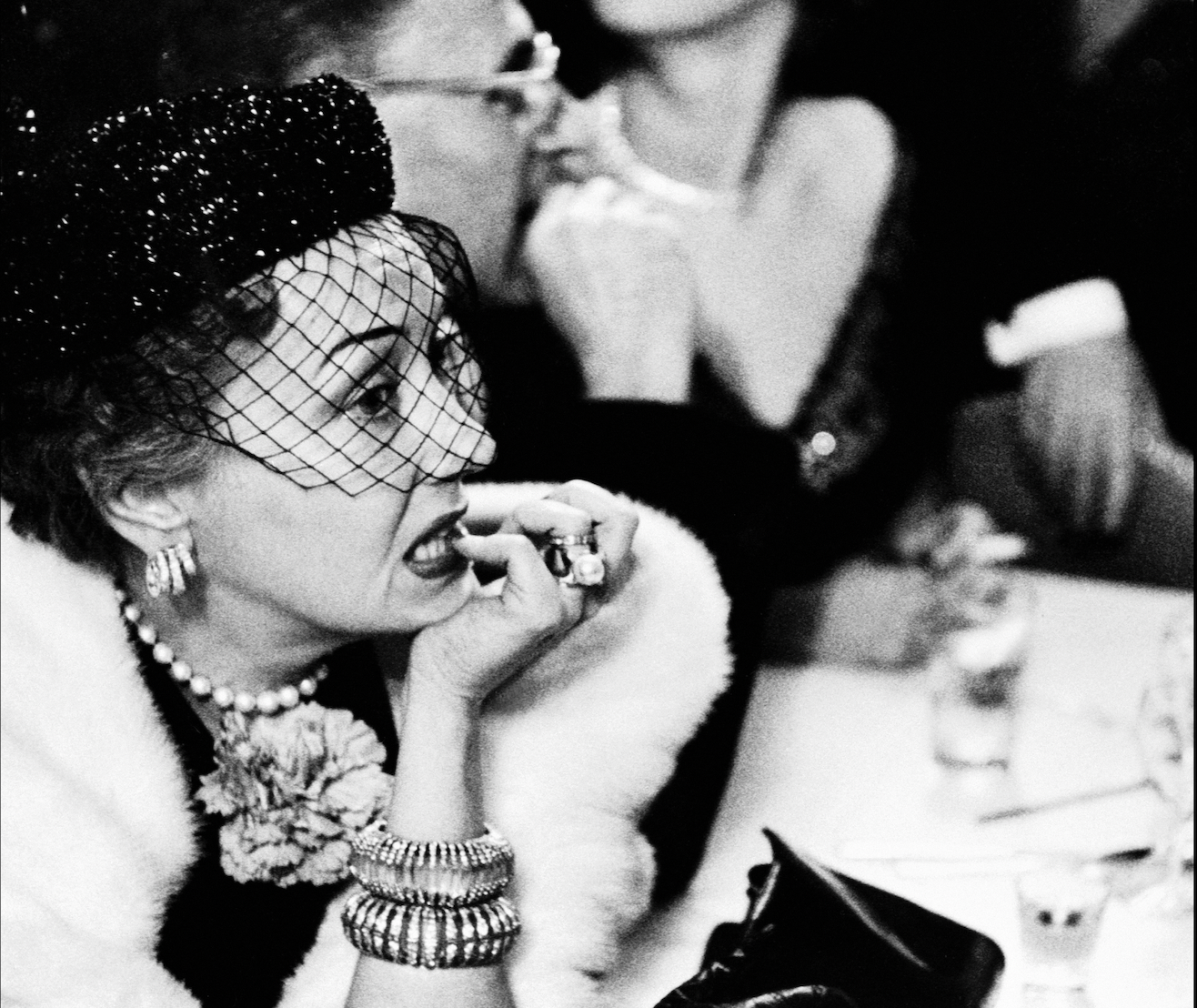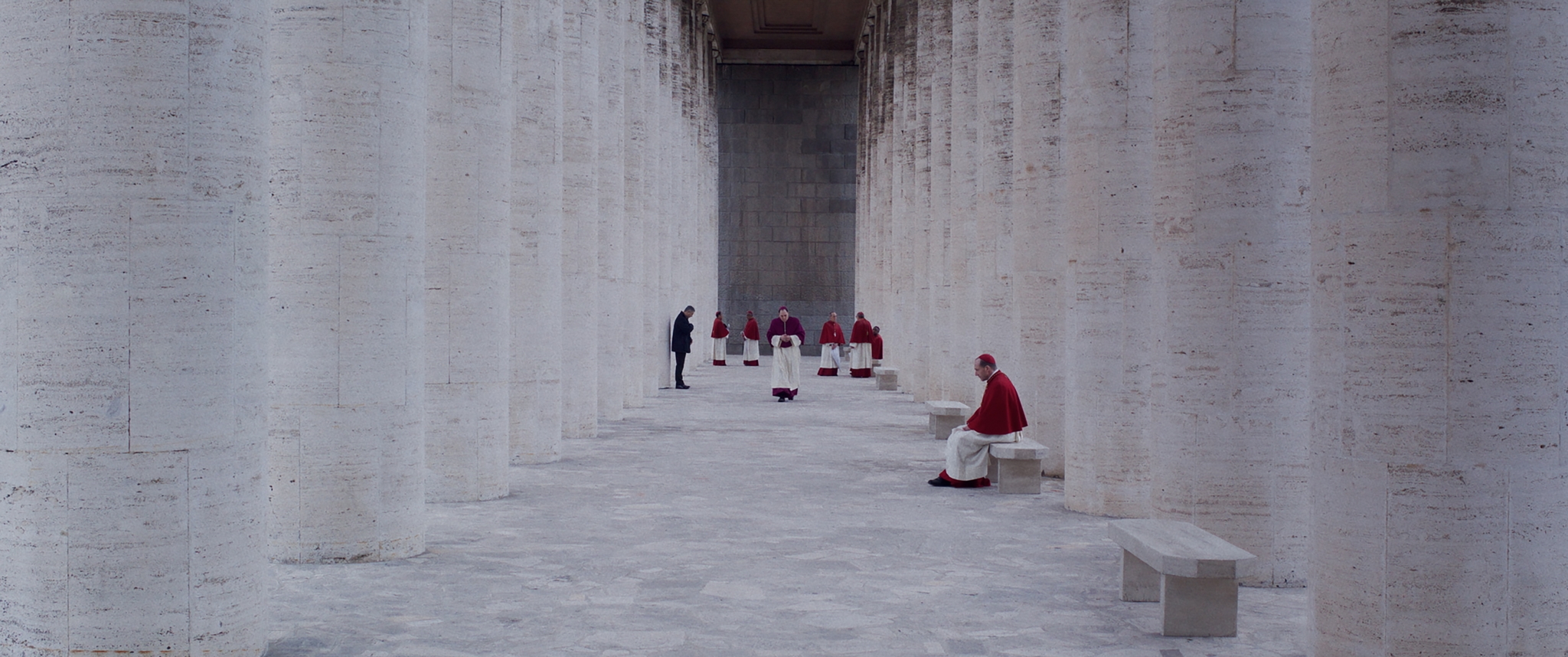

The Production Designer and Set Decorator of Edward Berger’s Conclave sit down with Amy O’Brien to discuss how they captured the secret and sinister beauty of the 21st century Vatican.
When Suzie Davies and Cynthia Sleiter first linked up in Rome in the summer of 2022, it was “as close to what you can call love at first sight,” recalls Sleiter. “The minute we first looked at the Conclave project together, our vision matched up. Everyone knows about the aesthetics of the Sistine Chapel, but we both wanted to draw inspiration from the modernist areas of Rome to show the extraordinary way that the Cardinals and the city actually live.”
Modernism is having a bit of a cinematic moment right now, as Brady Corbet’s The Brutalist also celebrates the post-war architectural style. In both films, the modernist aesthetic creates a sinister thriller backdrop. And in Conclave, the unexpectedly modernist representation of the Vatican captures the Italian condition as well as that of the modern Catholic Church—it’s a place that exists in the present, but is at once perennially looking backward, and constrained from properly moving forward.
Davies, who was working on the set of Saltburn in 2022, jumped at the chance to recreate Rome’s Vatican when she got the call from director Edward Berger, who was plotting an adaptation of Robert Harris’ 2016 novel Conclave. While Davies had never worked in Rome before, Sleiter is based in Rome and swiftly assembled a local art department. Almost three years later, the pair’s work is nominated for Best Production Design at both the BAFTAs and the Oscars.
Recreating the public-facing exterior of Rome’s Vatican and the Cardinals’ secret inner world for the film was no mean feat. The Vatican doesn’t allow filming anywhere on site, so most of the set was a build. Davies and Sleiter say it’s this logistical challenge that gave them the creative freedom to create a superlative cinematic world, where the period in time is “a deliberately ambiguous near future,” as Davies puts it. Only the electronic hardware—from the bedroom coffee machines and room key cards to the occasional Cardinal’s vape—places us firmly within the realms of the last two decades.
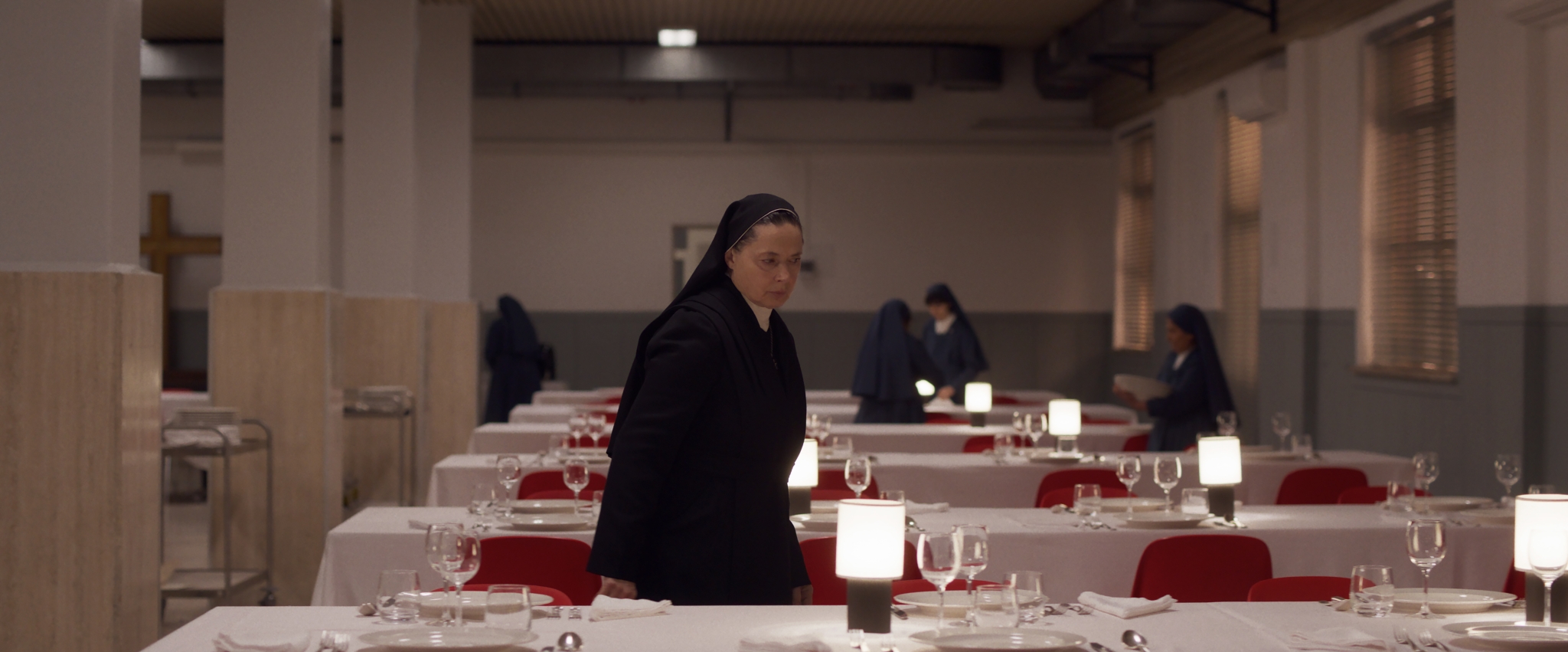
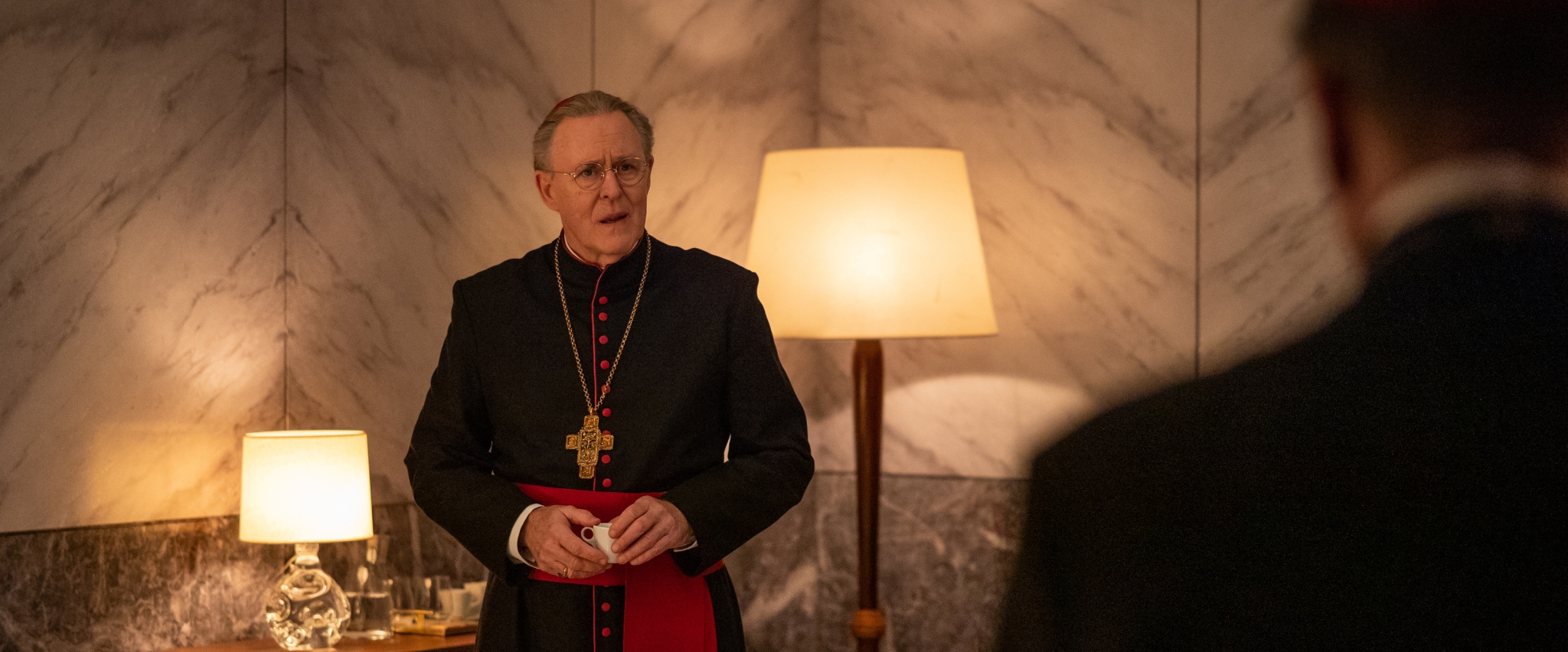
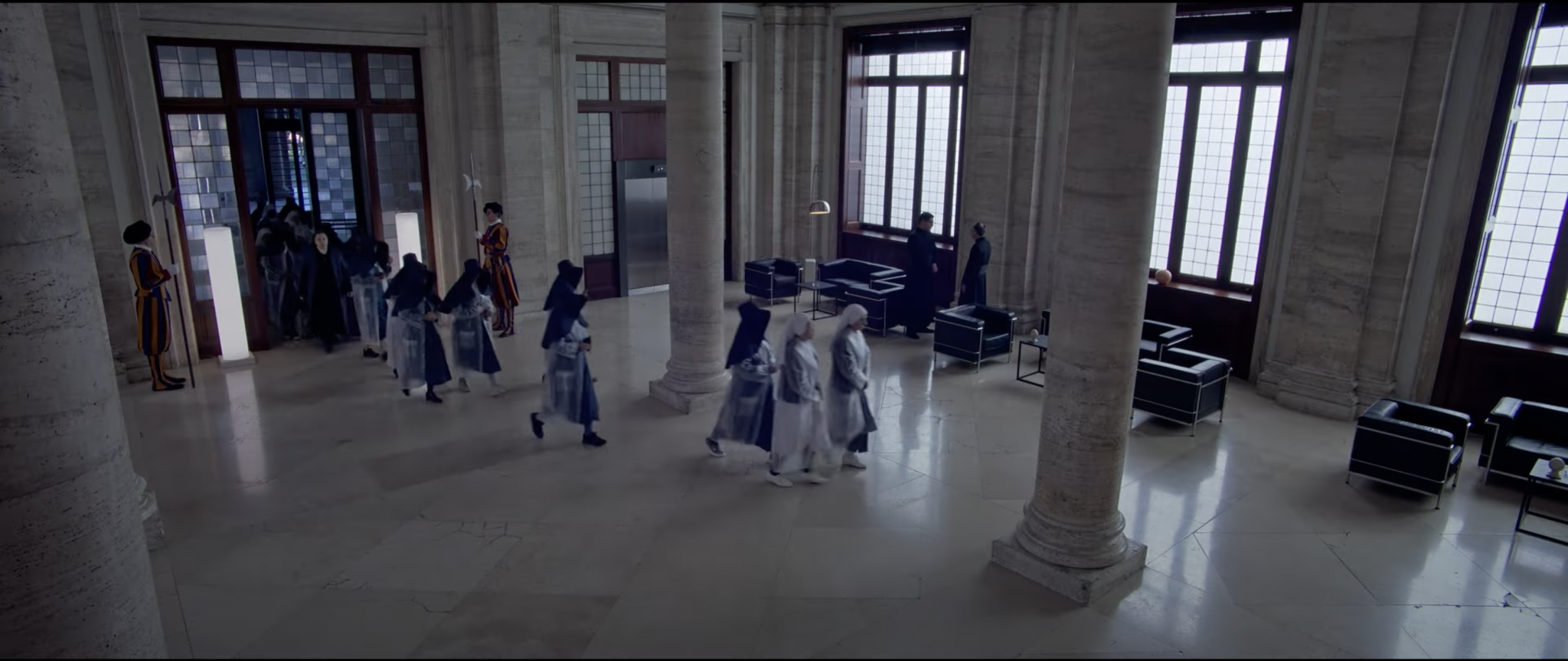
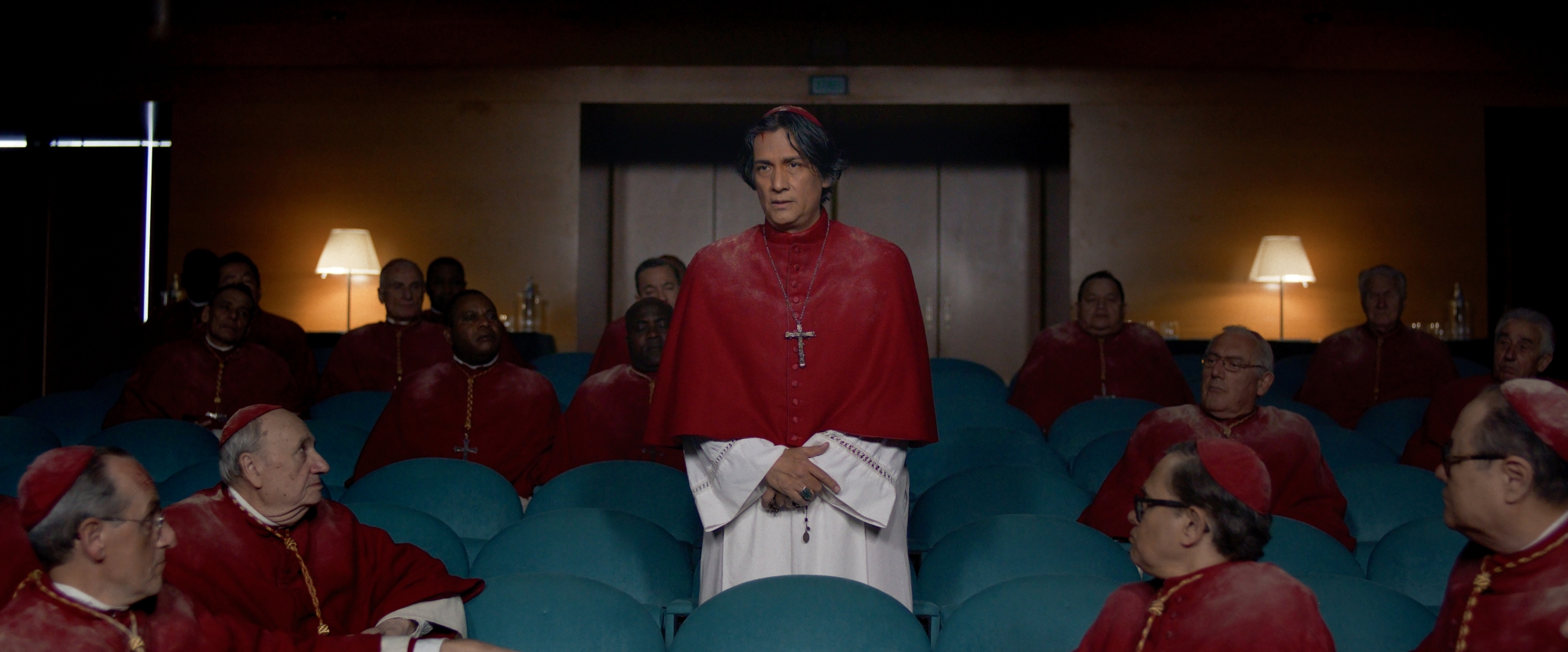
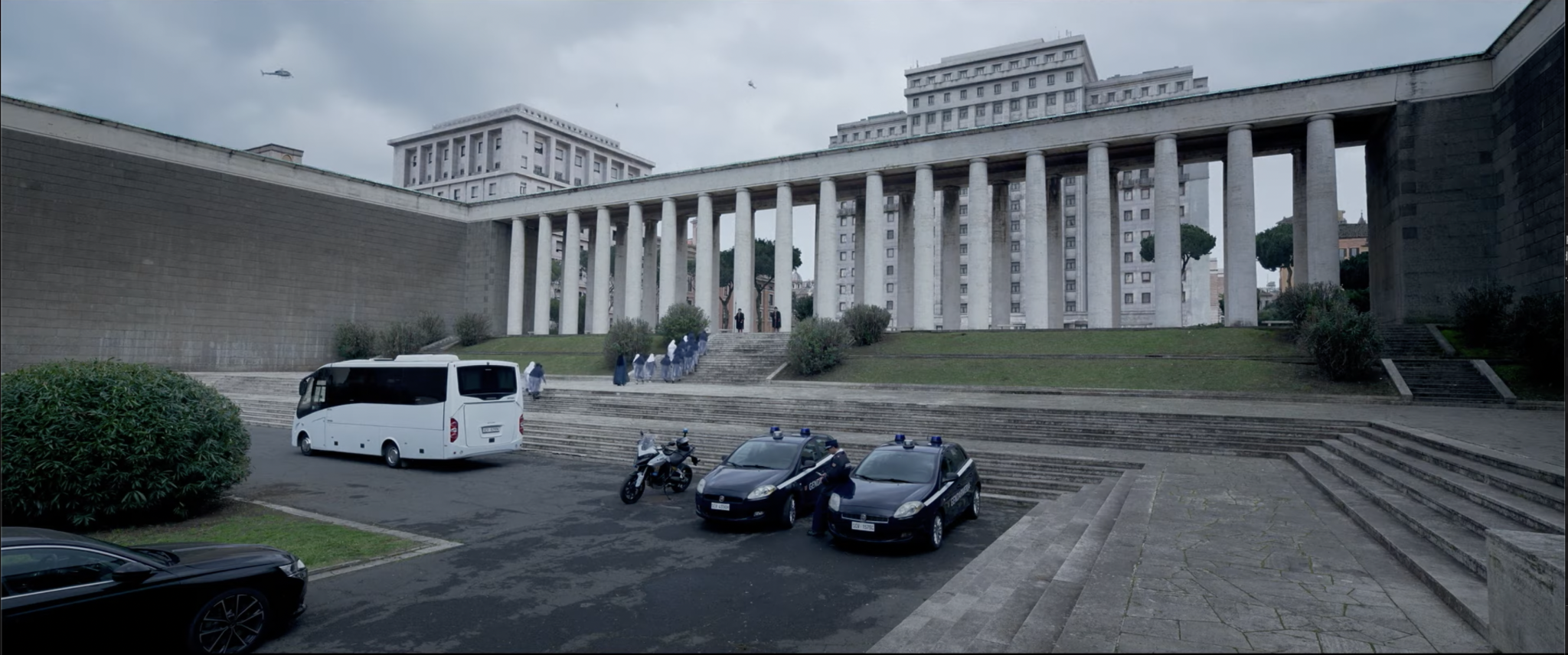
“We did tours of the Sistine Chapel that directly inspired our build, but we weren’t allowed to go into the real Casa Santa Marta,” Davies says. “We just saw from afar that it was the dullest 90s building you’d ever seen.” Equipped with just one image of its reception area online, Davies and Sleiter took full artistic licence when it came to the priests’ secret inner world. “It was so important to have the authenticity of the conclave process from our research, but we weren’t making a documentary, we were telling a thrilling cinematic story,” Davies says. “So we decided to create a brutalist aesthetic, an environment where power and intrigue could take place.”
Even though the Cardinals’ private Casa Santa Marta living quarters are supposed to contrast with the ornate Sistine Chapel and be more utilitarian, there’s still a distinct luxurious feeling to them — one that Sleiter, living in Rome, knows to be extremely Italian. “In Italy you may be sitting in the reception at your dentist and there’s a Le Corbusier couch, or a Flos arco lamp… It’s just the typically Italian way of dressing normal places where people do nothing special,” says Sleiter. “So the priests’ rooms are design, because Italy is design.” Sleiter’s team sourced vintage glass lighting from all around Italy, and built most of the furniture on set as replicas of modernist pieces they found. The bedrooms are adorned with luxury Pierre Frey wallpaper, and Sleiter had the wall panelling and furniture custom made out of solid oak.
“We absolutely could have gone much more utilitarian, but we wanted to elevate it a little because after all, it’s for the Pope,” Davies says. Sleiter says that although furniture and materials were chosen for their quality and design, the cardinals’ bedrooms are still designed to be “no frills”, to enhance and not distract from the characters that reside within them. Bar a few modifications here and there — like Cardinal Aldo Bellini (Stanley Tucci’s character) and his room’s well-stocked mini bar. Slight size variations between the Cardinals’ rooms were achieved with “all the smoke and mirrors”, Davies says. After the Sistine Chapel was built, there was only a small amount of space left on set to build Casa Santa Marta, so the team built them as a set of flats on wheels that they could squeeze in and out and stretch for different scenes.
The space they were working with can hardly be classed as small, however. Conclave’s set was built at Rome’s iconic Cineccità film studio, the largest film studio in Europe that also set the stage for some of the greatest films of the 1950s and 60s — from Italian icons like Federico Fellini, who shot the majority of his films there, to Hollywood blockbusters like Roman Holiday and Cleopatra. “I used to get goosebumps just driving through the gates of Cineccità, it’s got such a history of the amazing Italian filmmakers back in the day that I felt I was getting just by osmosis the minute I was on set,” Davies says. “We had one of the biggest stages, but as every designer knows, you always want bigger. We filled every square inch of it with the build.”
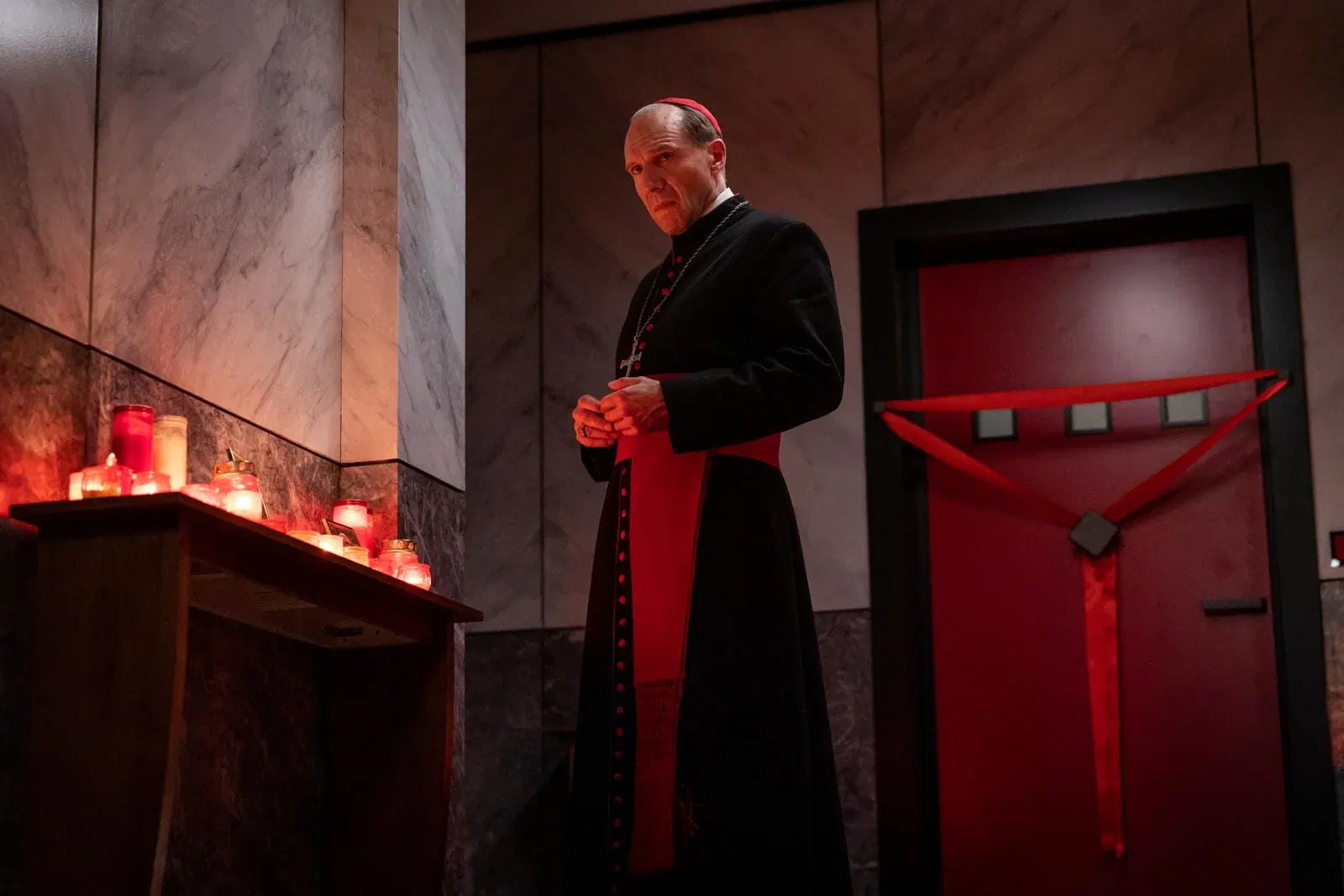
“We absolutely could have gone much more utilitarian, but we wanted to elevate it a little because after all, it’s for the Pope.”
Suzie Davies
After the Sistine Chapel build came the central feature of the Cardinals’ Casa Santa Marta residence: “The longest corridor we could possibly build,” according to Davies. It’s long, dark and straight with a deep red carpet, heavy marble walls and a low ceiling and neon lights — all design features that are reminiscent of the austere, symmetrical buildings of Italy’s post-war fascist architecture. It’s an aesthetic that is both disorientating for the viewer, as it’s hard to place it in the past, present or future, and also creates a sense of entrapment for some of the film’s tensest scenes.
It’s no coincidence that Rome’s Cineccità studio was itself redeveloped after the first world war by Mussolini’s fascist government, which wanted to grow the Italian economy through a domestic film industry to rival that of Hollywood. Around the same time, he also developed a new neighbourhood in south Rome called the EUR district, characterised by its huge imposing modernist buildings, like the famous Palazzo della Civiltà Italiana.
“We were really inspired by the brutal, fascist architecture in Rome, and spent quite a bit of time in the EUR district — we actually really wanted to film there,” says Davies. “We were directly influenced by the modernist contemporary architects like Carlo Scarpa, and this aesthetic really fed into the 70s thriller vibe we were trying to create with the whole movie,” she says. Walking around Rome’s EUR district stands in stark contrast to walking around the baroque architecture of the Vatican City — its imposing buildings are a concrete reminder of people’s entrapment within a fascist dictatorial regime. “We wanted to reflect the feeling of entrapment this aesthetic creates with Cardinal Santa Marta. Here, the cardinals are also entrapped, so we created a weight and heaviness for the walls with solid marble,” Davies says.
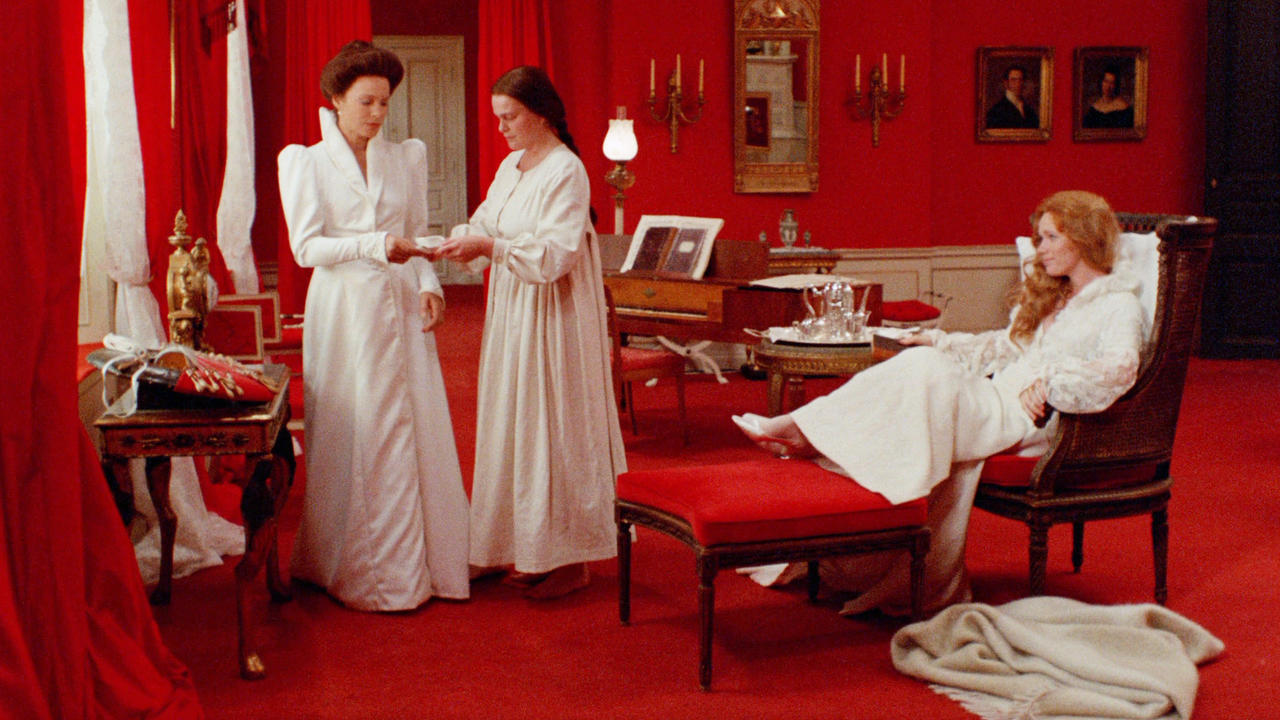
Cries and Whispers (1973)—Ingmar Bergman
The heaviness of the materials also reflects the heaviness of the process that the Cardinals are going through — shaping the future of the Catholic church. “I almost wanted people to hear just the hum of the light and the air conditioning when those shutters come down, so there’s a real isolation of our characters whilst they go through this very profound decision-making process,” Davies says. “By removing all the ornaments of the build, using flat marble, and sucking out most of the colour, we made an environment that feels hermetically sealed.”
Sleiter and Davies say that throughout the film, they wanted to constantly oscillate between two juxtaposing aesthetics — the light, ornate Sistine Chapel, and the dark, austere Casa Santa Marta. But throughout the film, there is one constant visual element that follows the Cardinals through the set: the colour red. Sleiter’s art department collaborated with the costume department to play with different shades and textures of red on red throughout the film, paying homage to this motif in films like [Ingmar Bergman‘s 1973] Cries and Whispers. “Sometimes it’s an overwhelming red, like in the Sistine Chapel, that completely covers you, or sometimes it’s the only pop of colour in Casa Santa Marta, where we had little red doors, or red chairs in the municipal canteen,” Davies says.
In the film’s final scene, set in the Sistine Chapel’s Room of Tears antechamber, the newly-elected pope changes into his papal robes for the first time. Here, a warm red engulfs both the walls and the floor of the room in the Cardinals’ quarters, taking on a symbolism of hope for the first time in the film. “For the room of tears, the warm red feels like a heart, or like a womb,” Davies says. “We end with it taking on the symbolism of the beginning of something new.”

